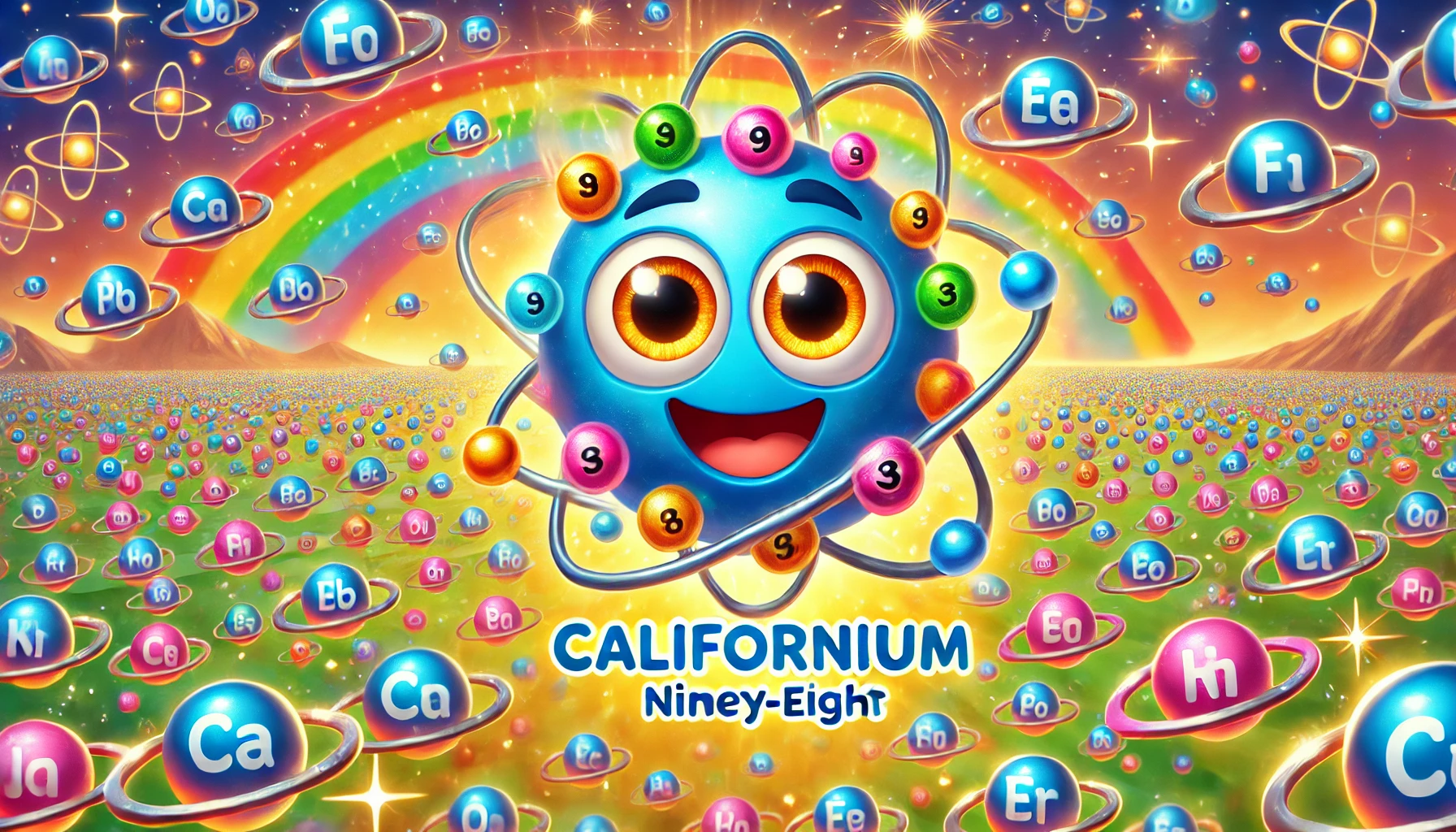Understanding Californium: Properties, Uses, Health Risks, and Fascinating Facts
Understanding Californium: Properties, Uses, Health Risks, and Fascinating Facts
Table of Contents
- Introduction to Californium
- Properties of Californium
- Uses of Californium
- Health Risks of Californium Exposure
- Interesting Facts about Californium
- Environmental Impact of Californium
- Conclusion
- References
Understanding Californium: Properties, Uses, Health Risks, and Fascinating Facts
Introduction to Californium Californium is a chemical element with the symbol Cf and atomic number 98. It is a highly radioactive metal in the actinide series, first synthesized in 1950. This article explores the properties, uses, health risks, and interesting facts associated with californium, providing a comprehensive understanding of this rare element.
Properties of Californium Californium is characterized by several distinct physical and chemical properties.
Physical Properties
- Appearance: Californium is a silvery metal that tarnishes in air.
- Density: The density of californium is approximately 15.1 g/cm³.
- Melting Point: Californium has a melting point of 900°C (1,652°F).
- Boiling Point: The boiling point of californium is estimated to be around 1,740°C (3,164°F).
Chemical Properties
- Reactivity: Californium is chemically reactive and can form compounds with various elements, including oxygen, fluorine, and chlorine.
- Compounds: Californium forms various compounds, such as californium oxide (Cf₂O₃), californium chloride (CfCl₃), and californium fluoride (CfF₃).
Uses of Californium Due to its high radioactivity, californium has several significant applications, particularly in scientific research and industrial applications.
Scientific Research
- Neutron Sources: Californium-252 is used as a neutron source in scientific research and in neutron radiography. It is valuable for studying materials and detecting structural flaws.
- Nuclear Research: Californium is used in nuclear research to study the properties of heavy elements and to explore nuclear reactions and decay processes.
Industrial Applications
- Radiography: Californium-252 is used in industrial radiography to inspect the integrity of aircraft components, pipelines, and other critical structures.
- Moisture Gauges: Californium is used in moisture gauges to measure the moisture content in soil and other materials.
Medical Applications
- Cancer Treatment: Californium-252 is used in brachytherapy, a type of radiation therapy for treating certain types of cancer. Its intense neutron emissions make it effective for targeting and destroying cancer cells.
Health Risks of Californium Exposure Californium is highly radioactive, and exposure can pose significant health risks.
Inhalation and Ingestion
- Radiation Poisoning: Inhalation or ingestion of californium can cause severe radiation poisoning, with symptoms including nausea, vomiting, hair loss, and damage to internal organs.
- Bone and Liver Accumulation: Californium can accumulate in the bones and liver, increasing the risk of cancer and other health issues.
Skin and Eye Contact
- Radiation Burns: Direct contact with californium can cause severe radiation burns on the skin.
- Eye Damage: Exposure to californium dust or vapors can cause eye damage and potential blindness.
Chronic Exposure
- Cancer Risk: Prolonged exposure to californium increases the risk of developing various cancers due to its high radioactivity.
Interesting Facts about Californium Californium has several intriguing aspects that make it an interesting element.
Discovery
- Discovered in 1950: Californium was discovered by a team of scientists led by Albert Ghiorso, Stanley G. Thompson, and Glenn T. Seaborg at the University of California, Berkeley. It was named after the state of California and the university.
Unique Properties
- Radioactivity: Californium is highly radioactive, with several isotopes that are important for various applications.
- Neutron Emission: Californium-252 is one of the most powerful neutron emitters known, making it extremely valuable for scientific and industrial uses.
Isotopes
- Radioactive Isotopes: Californium has no stable isotopes. The most common isotopes are californium-249, californium-250, and californium-252, each with distinct uses in technology and research.
Environmental Impact of Californium Californium is highly toxic to the environment and can pose significant risks to ecosystems and human health.
Natural Occurrence
- Abundance: Californium does not occur naturally and is produced synthetically in nuclear reactors.
- Production: Californium is produced in minute quantities, primarily for scientific research and industrial applications.
Pollution and Bioaccumulation
- Environmental Pollution: Californium can enter the environment through nuclear testing, industrial emissions, and improper disposal of radioactive materials.
- Bioaccumulation: Californium can accumulate in the food chain, posing risks to wildlife and humans who consume contaminated food and water.
Waste Management
- Nuclear Waste: Californium is a component of nuclear waste and poses long-term storage challenges due to its high radioactivity. Effective management and containment strategies are crucial to mitigate its environmental impact.
Conclusion Understanding californium, its properties, uses, health risks, and interesting facts provides valuable insight into this rare and highly radioactive element. While californium has significant applications, particularly in scientific research and industrial radiography, its high radioactivity and associated health risks necessitate careful handling and responsible management. Ongoing research and advancements in technology continue to shed light on the complexities and potential uses of californium in modern science and industry.

<ⓒ WizardMedics (wizardmedics.com)>






